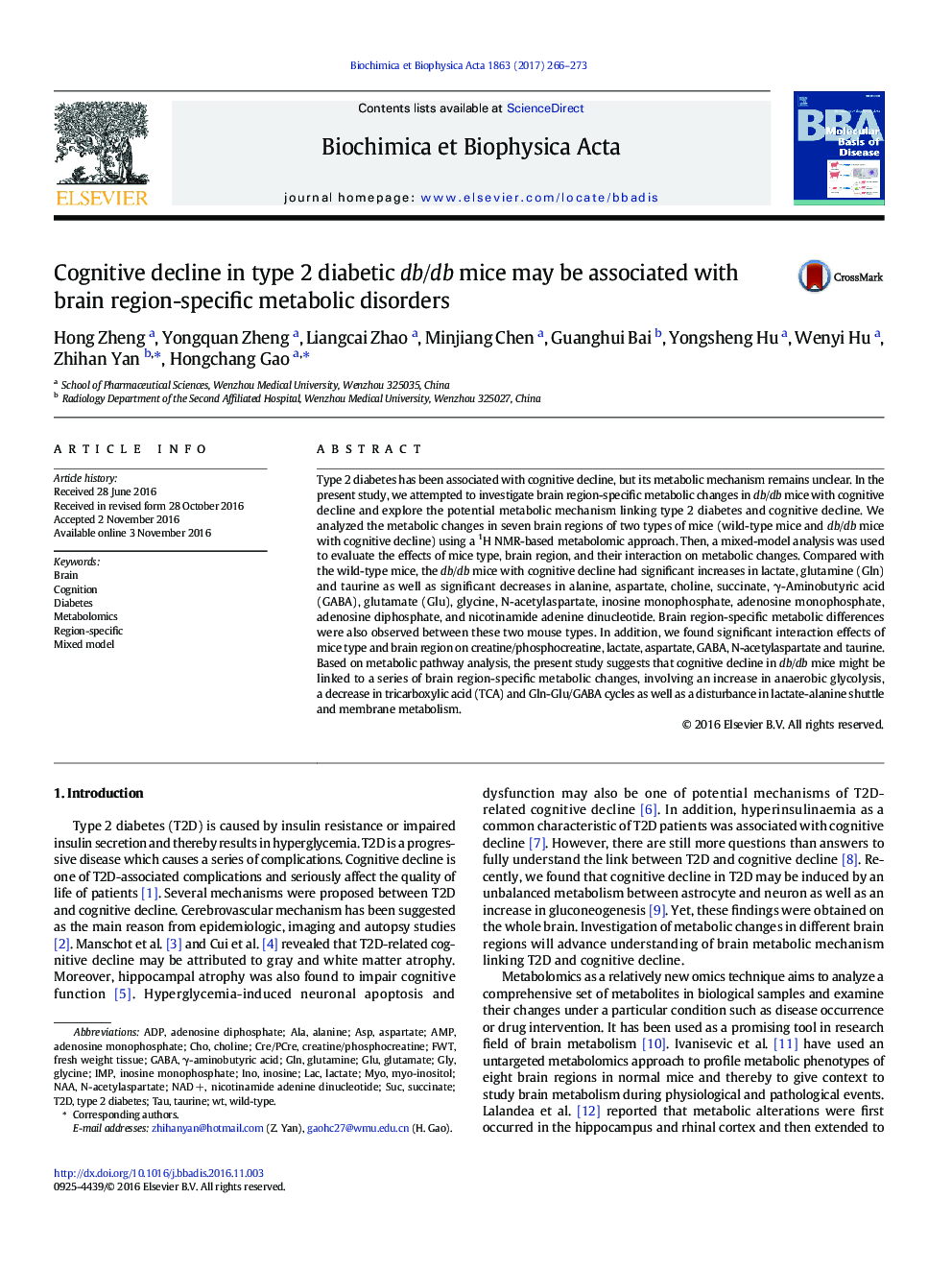| Article ID | Journal | Published Year | Pages | File Type |
|---|---|---|---|---|
| 5501184 | Biochimica et Biophysica Acta (BBA) - Molecular Basis of Disease | 2017 | 8 Pages |
Abstract
Type 2 diabetes has been associated with cognitive decline, but its metabolic mechanism remains unclear. In the present study, we attempted to investigate brain region-specific metabolic changes in db/db mice with cognitive decline and explore the potential metabolic mechanism linking type 2 diabetes and cognitive decline. We analyzed the metabolic changes in seven brain regions of two types of mice (wild-type mice and db/db mice with cognitive decline) using a 1H NMR-based metabolomic approach. Then, a mixed-model analysis was used to evaluate the effects of mice type, brain region, and their interaction on metabolic changes. Compared with the wild-type mice, the db/db mice with cognitive decline had significant increases in lactate, glutamine (Gln) and taurine as well as significant decreases in alanine, aspartate, choline, succinate, γ-Aminobutyric acid (GABA), glutamate (Glu), glycine, N-acetylaspartate, inosine monophosphate, adenosine monophosphate, adenosine diphosphate, and nicotinamide adenine dinucleotide. Brain region-specific metabolic differences were also observed between these two mouse types. In addition, we found significant interaction effects of mice type and brain region on creatine/phosphocreatine, lactate, aspartate, GABA, N-acetylaspartate and taurine. Based on metabolic pathway analysis, the present study suggests that cognitive decline in db/db mice might be linked to a series of brain region-specific metabolic changes, involving an increase in anaerobic glycolysis, a decrease in tricarboxylic acid (TCA) and Gln-Glu/GABA cycles as well as a disturbance in lactate-alanine shuttle and membrane metabolism.
Keywords
InosineN-acetylaspartateADPT2DALAIMPGLNiNOASPNaASUCFWTLACAMPadenosine diphosphateadenosine monophosphateaspartatealanineγ-aminobutyric acidChoDiabetesTaurineTauType 2 diabetesSuccinateCognitionmyoLactateMetabolomicsMixed modelBrainRegion-specificInosine monophosphateMyo-inositolwild-type Nicotinamide adenine dinucleotideCholineGABAGluglutamateglutamineGlyGlycine
Related Topics
Life Sciences
Biochemistry, Genetics and Molecular Biology
Ageing
Authors
Hong Zheng, Yongquan Zheng, Liangcai Zhao, Minjiang Chen, Guanghui Bai, Yongsheng Hu, Wenyi Hu, Zhihan Yan, Hongchang Gao,
